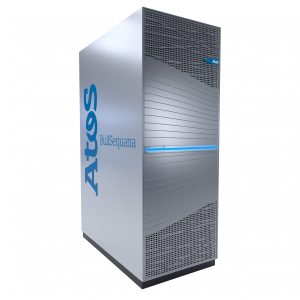 Today Atos announced a 4-year contract to deliver a BullSequana XH2000 supercomputer to Uninett Sigma2, the national e-infrastructure provider in Norway. As the most powerful supercomputer in Norway, the AMD-powered system will provide researchers with an enhanced computing capacity to enable new innovation breakthroughs.
Today Atos announced a 4-year contract to deliver a BullSequana XH2000 supercomputer to Uninett Sigma2, the national e-infrastructure provider in Norway. As the most powerful supercomputer in Norway, the AMD-powered system will provide researchers with an enhanced computing capacity to enable new innovation breakthroughs.
Our new BullSequana XH2000 includes the latest processor and accelerator architectures to provide more computing power to support users go beyond the limits of traditional simulation. As the leading European supercomputer manufacturer, we are proud to be contributing to the competitiveness of Norway and the Norwegian research and academic community.” said Pierre Barnabé, Senior Executive Vice-President, Head of Big Data & CyberSecurity Division at Atos.
With the BullSequana XH2000 system equipped with next-generation AMD EPYC processors, Norwegian researchers will have access to more than 5 times more capacity than previously, with a theoretical peak performance of 5.9 PetaFlops. This computational will enable research initiatives ranging from modeling climate change, discovering new cancer-fighting drugs, to gaining a better understanding of the origins of the universe.
Specifications:
- 1344 compute nodes:
- 2 x 64core, next-generation AMD EPYC processors, code name ‘Rome
- Total number of cores: 172032
- Peak performance: 5.9 Petaflops
- Interconnect: Mellanox HDR InfiniBand
- Storage:
- DDN Storage
- 2.5 Petabyte Lustre parallel file system
- Footprint: 14.78m2.
- Power consumptuion: 952kW
- Liquid Cooling: 95% of the heat will be captured to water
This new solution provides Uninett Sigma2 with a powerful environment for data-intensive computing,” said Gunnar Bøe, Managing Director of Uninett Sigma2. “It is of the utmost importance for Norwegian researchers to have access to e-infrastructure at a high international level in order to be competitive, and a continuing growing number of research groups will benefit greatly from the computational power of the new system. This system will help us catch up some of the current lack of resources, but significant increase in funding is necessary to remedy the lack of resources.”
One interesting aspect of this supercomputer installation is energy recovery. Using Atos’ patented DLC (Direct Liquid Cooling) solution, the system minimizes global energy consumption by using warm water. Secondly, all the electricity used for this new system will come from hydro-electric power plants. Additionally, the new machine will be able to recover most of the energy used for calculation and cooling, using hot water to heat the buildings at the university campus at NTNU (Norwegian University of Science & Technology).




